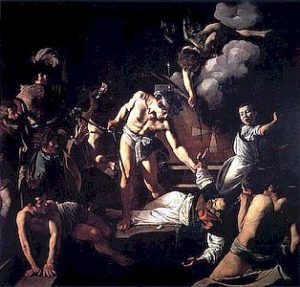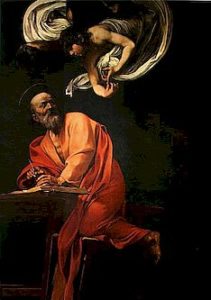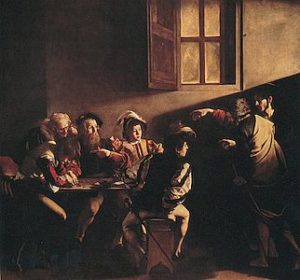by Clovis WHITFIELD
Gaspare Celio’s biography of Caravaggio
The recent publication of Gaspare Celio’s biography of Caravaggio, published in “Storia 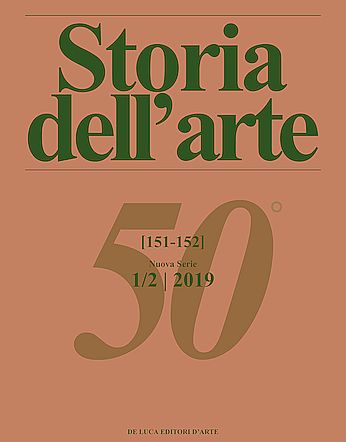 dell’Arte” 151/152, Nuova Serie,1/2, 2019, p. 137-151, by Riccardo Gandolfi adds new impressions from his recollections of the new arrival in Rome, and confirmation of others. It is a major event to locate and publish an early biography of the artist, and while we still wait for the whole of Celio’s Lives (apparently more than two hundred biographies remain unpublished), this as it relates to Caravaggio is a welcome addition to what we know of the artist’s arrival in Rome. A draft of the text written in 1614 of the Vite (but amended later) it is the earliest biography, aside from the mention in Carel van Mander’s account of the artist derived from his correspondent in Rome (1600/1601), Floris van Dyck. There is confirmation of Prospero Orsi’s early encounter and the fascinating information that among the many places where Caravaggio found lodging was his house, (above a tavern in the neighbourhood of the old Palazzo Barberini), where he saw the artist painting a Lute Player, and that Vincenzo Giustiniani played a part in securing the pardon Caravaggio needed to return to Rome.
dell’Arte” 151/152, Nuova Serie,1/2, 2019, p. 137-151, by Riccardo Gandolfi adds new impressions from his recollections of the new arrival in Rome, and confirmation of others. It is a major event to locate and publish an early biography of the artist, and while we still wait for the whole of Celio’s Lives (apparently more than two hundred biographies remain unpublished), this as it relates to Caravaggio is a welcome addition to what we know of the artist’s arrival in Rome. A draft of the text written in 1614 of the Vite (but amended later) it is the earliest biography, aside from the mention in Carel van Mander’s account of the artist derived from his correspondent in Rome (1600/1601), Floris van Dyck. There is confirmation of Prospero Orsi’s early encounter and the fascinating information that among the many places where Caravaggio found lodging was his house, (above a tavern in the neighbourhood of the old Palazzo Barberini), where he saw the artist painting a Lute Player, and that Vincenzo Giustiniani played a part in securing the pardon Caravaggio needed to return to Rome.
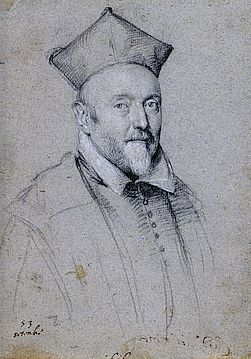
Firstly Celio makes it clear that Del Monte wanted a young painter ‘un giovanetto che gli andasse copiando alcuna cosa’ who could do some copies for him, and after searching for him all day, Prospero found him asleep by the statue of Pasquino, near the end of Piazza Navona. Caravaggio was evidently known for his ability to copy, and indeed the 1628 Del Monte inventory lists Un quadro grande della Madonna, et Christo in braccio S. Anna et S. Gioseppe con cornice nere mano del Caravaggio, et copia di Raffaelle ( No. 396 in the 1628 Del Monte inventory, Z. Wazbinski Il Cardinale Francesco Maris del Monte , Florence 1994, II, p. 593). There are numerous copies after Raphael in the Del Monte inventories, and Ottavio Leoni, too made copies after Raphael, like his signed one of the Louvre Belle Jardinière (M.T. Rizzo’s study: Ottavio Leoni pittore (1578-1630) in Studi romani, Vol. XLVIII, 1999, p 25, Tav. V). The picture was last recorded in the Gustav Cramer Gallery, The Hague. Ottavio was also closely associated with Del Monte, who called him his allievo, and sent him to Florence in 1599.
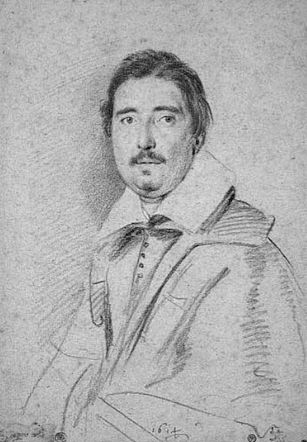
The early biographies of Caravaggio all emphasise his exploitation of reality, and Celio is no exception. He makes a number of mentions of his ritrarre, and this provides an opportunity for a explanation of what this involved in the case of Caravaggio, when he painted not exclusively portraits, but the direct observation of subjects from life. Although this aspect of the word ritrarre did include the kind of accurate portraits that Leoni for instance made (‘drawing round’), probably with the aid of the camera obscura, this was in reference to the phenomenal accuracy with which Caravaggio saw his subjects. They were valued because they captured the exact features and dress of his subjects as a record. The word was not used exclusively for portraiture but for working generally from life, from nature, of people, buildings, landscapes, animals.
From Celio’s account it is clear that the ritratti that he did for Lorenzo Carli, (where he met up with another Sicilian, Mario Minitti) were heads of saints rather than portraits. The interpretation in modern literature is still that these ritratti are lost or not available for study, according to F. Cappelletti (Caravaggio, Un ritratto somigliante , 2009, p. 40/41, and note 126). It has often been presumed that Baglione’s description of “alcuni quadretti da lui nello specchio ritratti” at the beginning (Vite, 1642, p. 136) of his account of his Roman career, or Mancini’s mention of Caravaggio’s ritratti for Barberino (Maffeo Barberini) refer to actual portraiture, whereas his activity was still replication or ‘copying from life’ . This should be seen as consistent with what Van Mander (1604) relates, in one of the few other close reports of what Caravaggio said
“Egli dice infatti che tutte le cose non sono altro che bagatelle, fanciullaggini o baggionate – chiunque le abbia dipinte – se esse non sono fatte dal vero, e che nulla vi può essere di buono o di meglio che seguire la natura. Perciò egli non traccia un solo tratto senza star dietro alla natura, e questa copia dipingendo. . Questa non è d’altronde una cattiva strada per giungere poi alla meta; infatti di[ipingere su disegni, anche se essi ritraggono il vero, non è certamente la stessa cosa che avere il vero avanti a sé e seguir la natura nei diversi colori; però occorre che anzitutto il pittore sia così progredito in intendimento da saper distinguere e quindi saper scegliere il bellissimo dal bello.”
(Translation from S. Macioce , Michelangelo da Caravaggio, Fonti e Documenti, Rpme, 2003, p. 309).
Celio tells us that Caravaggio could not be distracted from his singleminded pursuit of his ritratti e piaceri, giving us an intimation of this obsessive preoccupation with accurate recording of visual information.
We can also recall that Vasari also often uses ‘ritrarre’ for direct copies of other artists’ work: “Even more frequently [Vasari} uses this word for the direct copying of nature, as when Giotto revived painting by introducing the direct depiction of living people from nature” (David J. Cast, Vasari’s Vocabulary, Ashgate Research Companion to Vasari, 2014 p. 224). Mancini himself on completion of his treatise on painting, (Considerazioni sulla pittura, ed Barocchi & Salerno, 1956) writes in 1621 of this ‘Finij quella cosa della Pittura ma non ho fatto i ritratti, le copie di queste pitture antiche …’. We find the same interpretation in Baldinucci’s Vocabolario Toscano dell’arte del Disegno (Florence, 1681, ad vocem – Ritrarre) states that ‘this is used by our artists to describe painting from life ‘da nostri artefici si usa quella voce per lo dipignere dal naturale’, and this is the interpretation also in L. Molossi’s Nuovo elenco di voci e maniere di dire, Parma 1839/41, p. 814, where it means ‘Dipingere dal naturale’. None of these uses of the word ritrarre are in the context of actual portraits. So the Musicians were ritratti dal naturale for Bellori, for it was the ability to capture what was in front of him that so surprised Caravaggio’s contemporaries.
The figures in the Contarelli Chapel were amazing, as Celio writes because they were taken from life ‘essendo le teste ritratte dal naturale’ .
Even if artists had since the beginning of the Renaissance tried to counterfeit appearance, they had not achieved it in the way he did, and it was disconcerting. We also get from Celio’s account the impression of Caravaggio’s obsessive observation of his subject, for he was ‘solo intento al suo ritrarre. et alli piaceri’ . Celio allows that this was the source of his fame, ‘even though this trick was plain for those who were learned enough to understand’, or it took in those ‘persone non erudite’ for it was new only to ‘persone non dell’ arte’ . And if many artists in the Renaissance drew from life, it was largely to improve their being able to give a convincing interpretation of whatever theme they were called upon to reproduce, since it was impossible to imagine being able to capture the actual characters and gestures of real people in pictures, their virtuosity was in being able conjure these gestures and expressions, narratives and staging from their imagination.
The best examination of Caravaggio’s adherence to the model in front of him remains Keith Christiansen’s “Caravaggio and l’esempio davanti del naturale” in the Art Bulletin, September 1986, p. 421-445, which underlines the many mentions of this characteristic in the sources and refers also to the incisions found on the surface of many paintings, in the discussion of the absence of drawing in his work. While emphasising that Caravaggio does not use a cartoon, the author still holds onto the idea that the painter uses the incised line as a form of design, rather than part of his observational process: ‘they were used at an early stage of the designing process’ (p. 426). The advances made in recent years of IRR examination has however made clear that in addition to the abbozzo strokes, broad indications of the position of important features like the ear, there were also large brushstrokes in black or very dark colour that also underlined the position of features like the mouth, and were connected together with a network of drawn lines giving a plan of outlines of shadows and folds, observed equally from life. Most of these guidelines , and some of the incisions, have remained invisible until jnfrared reflectography furnished us with in-depth representation of underlying layers.
Caravaggio’s mastery of the composition is as much like a theatre director choosing an appropriate model, and gestures and expressions not from his repertory and memory, but from being able to capture the appearance before him with accents of light, colour and shade manually, with extreme sensitivity to changes of colour and tone. And at the same time being able to move his subject and adjust to the new image that that shift produced. His attention to each passage of the image he was observing not only created the impression of volume that he needed through observation of cast shadow, (not having perspective to rely on), it all looked uncannily naturalistic because of his attention to changing light meant that he also adjusted the colour of each section to what he had in front of him, what would today be called colour constancy. It was an ad hoc procedure that meant he looked at the colour of the ground of his canvas as much as at his palette so that he could adjust the features he was painting to their actual appearance. What we can gather from close reading of the paintings, through x-Rays but particularly IRR, is the progress of Caravaggio’s working method, from the first effects that strike the eye to the close observation of each passage of light, shade and colour.
So this new emphasis on the ‘naturale’ that Celio saw was also one of the first aspects of Caravaggio’s impact. The pursuit of ‘real’ appearance soon became something widely emulated, by people who did not all possess the acuity of sight that he was endowed with. And they did not study, like good apprentices, works that were recognised as excellent to copy, the approved models provided by the master in his workshop, but simply did half length figures from life ‘si contentassero di quella mezza figura vista dal naturale’ as Celio reports., complaining about the limitations of the novelty. Northerners adopted the genre of painting from life, leading to the widespread diffusion of what became known in the North as the tronie. This does not have any relationship in etymology to ritrarre, but we can follow the influence of this realism through Rubens to Rembrandt, who himself possessed a Cristus tronie nae ’t leven (Face of Christ from life;) in his 1656 inventory, (Lloyd de Witt, ed. ‘Testing Tradition against Nature’, Rembrandt’s radical New Image of Jesus, in Rembrandt and the Face of Jesus, ed. L. de Witt, 2011, p. 111).

Among the pittorecoli who Celio says were drawn to the Contarelli Chapel by his turcimanno Prospero Orsi, to admire the ‘teste dal naturale’ were evidently many Northerners who were drawn to the accurate characterisations that they saw there, drawn from familiar faces, that would promote the first echoes of Caravaggio that their public saw. in their home countries. These were the young artists who were excluded from the Accademia di San Luca, by Baglione and others, because they did not conform to the decorum that was insisted on. We can also dimly see that Caravaggio’s difficulty with iconography, which is striking in the early paintings, coincided with attempts by people to steer his extraordinary talents in a direction that would be understood by patrons who wanted to make use of the new imagery to illustrate familiar themes from the Bible as if they were pictures dal naturale. This was quite a new perception of the world around them, and they would provide the visual concepts where the artist was able to render every detail, but were not necessarily aware of the need for decorum or accuracy of iconography.
And the suspicion that he was merely able to copy what was in front of him was the reason behind the change of favour his work suffered when the novelty had worn off.
Clovis Whitfield © London
March 2020
ITALIAN TEXT
La recente pubblicazione della biografia di Caravaggio di Gaspare Celio, (vedi Riccardo Gandolfi, in Storia dell’Arte 151/152, Nuova Serie, 1/2, 2019, p. 137-151) presenta nuove impressioni in base ai suoi ricordi circa l’arrivo a Roma del lombardo e ne conferma altre. È un grande evento aver individuato ed ora pubblicato una prima biografia dell’artista, e mentre stiamo ancora aspettando che esca l’opera completa del Celio (sembra che più di duecento biografie rimangono inedite), questa su Caravaggio è un’aggiunta gradita a ciò che sappiamo del suo arrivo a Roma. Una bozza del testo scritto nel 1614 delle Vite (ma modificata in seguito) è la prima biografia, a parte la menzione nel racconto di Carel van Mander sull’artista derivata dal suo corrispondente a Roma (1600/1601), Floris van Dyck. Vi è la conferma del primo incontro di Prospero Orsi e le affascinanti informazioni secondo cui tra i molti luoghi in cui Caravaggio trovò alloggio c’era la sua casa (sopra una taverna nelle vicinanze di Palazzo Barberini), dove lo vide dipingere un liutaio, e che Vincenzo Giustiniani ebbe un ruolo nel garantire il perdono a Caravaggio necessario per tornare a Roma.
In primo luogo Celio chiarisce che Del Monte voleva un giovane pittore “un giovanetto che gli andasse copiando qualunque cosa” che potesse fare alcune copie per lui, e dopo averlo cercato tutto il giorno, Prospero lo trovò addormentato presso la statua di Pasquino, appena dietro Piazza Navona. Il Caravaggio era evidentemente noto per la sua capacità di copiare, e in effetti gli elenchi dell’inventario di Del Monte del 1628 annotano “Un quadro grande della Madonna, e Christo in braccio S. Anna e S. Gioseppe con cornice nera mano del Caravaggio”, e copia di Raffaelle (n. 396 nell’inventario Del Monte del 1628,vedi Z. Wazbinski Il Cardinale Francesco Maris del Monte, Firenze 1994, II, p. 593). Numerose sono le copie da Raffaello negli inventari di Del Monte e di Ottavio Leoni, anch’esse eseguite da Raffaello, come il suo firmato al Louvre “Belle Jardinière” (vedi M.T. Rizzo: Ottavio Leoni pittore (1578-1630) in “Studi romani”, Vol. XLVIII, 1999, p 25, Tav. V). L’immagine è stata registrata l’ultima volta nella Galleria Gustav Cramer, L’Aia. Ottavio fu anche strettamente associato a Del Monte, che lo chiamò suo allievo, e lo mandò a Firenze nel 1599.
Le prime biografie di Caravaggio sottolineano tutte il suo grande interesse per il dato reale, e Celio non fa eccezione. Ci parla del suo modo di ritrarre, e ciò fornisce l’opportunità di una spiegazione su ciò che comportava non solo quando dipingeva ritratti, ma riguardo all’osservazione diretta di soggetti dalla vita. Sebbene questo aspetto della parola ritrarre includesse il tipo di ritratti accurati che faceva Leoni, ad esempio (“girando attorno”), probabilmente con l’aiuto della camera oscura, questo era in riferimento alla fenomenale accuratezza con cui Caravaggio vedeva i suoi soggetti. Essi vennero apprezzati perché registravano come un documento le caratteristiche precise e l’abito dei suoi soggetti. L’espressione non era usata esclusivamente per la ritrattistica ma per in generale per quanto riguardava lavorare dalla vita, dalla natura, dalle persone, dagli edifici, dai paesaggi, dagli animali. Dal racconto di Celio è chiaro che i ritratti che fece per Lorenzo Carli, (dove incontrò un altro siciliano, Mario Minitti) erano teste di santi piuttosto che ritratti. Secondo l’interpretazione della letteratura moderna, questi ritratti sono perduti o non disponibili per lo studio, (vedi F Cappelletti, Caravaggio, Un ritratto somigliante, 2009, p. 40/41, e nota 126). Si è spesso supposto che la descrizione di Baglione di “alcuni quadretti da lui nello specchio ritratti” all’inizio del suo resoconto della sua carriera romana (Vite, 1642, p. 136),o la menzione di Mancini dei ritratti di Caravaggio per Barberino (Maffeo Barberini) facciano riferimento al significato della ritrattistica realmente intesa, mentre la sua attività era ancora la replica o “la copia dalla vita”. Ciò dovrebbe essere visto come coerente con ciò che Van Mander (1604) riferisce, in uno dei pochi altri resoconti prossimi a quanto Caravaggio disse “Egli dice infatti che tutte le cose non sono altro che bagatelle, fanciullaggini o baggionate – chiunque le abbia dipinte – se esse non sono fatte dal vero, e che nulla vi può essere di buono o di meglio che seguire la natura. Perciò egli non traccia un solo tratto senza star dietro alla natura, e questa copia dipingendo. Questa non è d’altronde una cattiva strada per giungere poi alla meta; infatti di[ipingere su disegni, anche se essi ritraggono il vero, non è certamente la stessa cosa che avere il vero avanti a sé e seguir la natura nei diversi colori; però occorre che anzitutto il pittore sia così progredito in intendimento da saper distinguere e quindi saper scegliere il bellissimo dal bello.”(Traduzione di S. Macioce, Michelangelo da Caravaggio, Fonti e Documenti, Rome, 2003, p. 309).Celio ci dice che Caravaggio non poteva distrarsi dal solo scopo della ricerca di ritratti e piaceri, dandoci un accenno di questa ossessiva preoccupazione con un’accurata registrazione di informazioni dal vivo.
Ricordiamo che Vasari usa spesso il termine ‘ritrarre’ riferito a copie direttamente da opere di altri artisti: “Ancora più frequentemente [Vasari} usa questa parola per la copia diretta della natura, come quando Giotto fece rivivere la pittura con la rappresentazione diretta della vita persone nella natura (David J Cast, Vocabolario del Vasari, Ashgate Research Companion to Vasari, 2014 p. 224). Lo stesso Mancini al termine del suo trattato sulla pittura, scrive nel 1621 su questo “Finij quella cosa della Pittura ma non ho fatto i ritratti, le copie di queste pitture antiche …” (Considerazioni sulla pittura, ed Barocchi & Salerno, 1956).Troviamo la stessa interpretazione nel Vocabolario Toscano dell’arte del Disegno di Baldinucci (Firenze, 1681, ad vocem – Ritrarre) dove si afferma che ‘questo è usato dai nostri artisti per descrivere la pittura dalla vita’, “da nostri artefici si usa quella voce per lo dipignere dal naturale”, e questa è l’interpretazione anche nel Nuovo elenco di voci e maniere di dire di L. Molossi, Parma 1839/41, p. 814, dove significa “Dipingere dal naturale”. Nessuno di questi usi della parola ritrarre è nel contesto di ritratti reali. Così i Musici furono ritratti dal naturale per Bellori, poiché fu la capacità di catturare ciò che aveva di fronte che sorprese così tanto i contemporanei di Caravaggio. Le figure nella Cappella Contarelli erano incredibili, come scrive Celio, perché prese dalla vita “essendo le teste ritratte dal naturale”. Anche se gli artisti avevano tentato fin dall’inizio del Rinascimento di contraffare l’apparenza, non l’avevano raggiunto nel modo in cui lo ottenne lui, e questo fu sconcertante. Dal racconto di Celio apprendiamo anche l’impressione dell’osservazione ossessiva di Caravaggio sul suo soggetto, poiché era “solo intento al suo ritrarre et alli piaceri “. Celio ammette che questa era la fonte della sua fama, “anche se questo trucco era chiaro per chi aveva imparato abbastanza da poter capire”, o ci volevano le “persone non erudite” dato che la novità era solo per “persone non dell” arte ‘. E se molti artisti del Rinascimento attingevano alla vita, accadeva in gran parte per migliorare la loro capacità di interpretare convincentemente qualsiasi tema fossero chiamati a riprodurre, poiché era impossibile immaginare di essere in grado di catturare in immagini i personaggi e i gesti reali di persone reali, il loro virtuosismo consisteva nel poterne evocare gesti ed espressioni, con narrazioni e messe in scena dalla loro immaginazione.
Il miglior esame dell’adesione di Caravaggio al modello che ha di fronte rimane “Caravaggio e l’esempio davanti al naturale” di Keith Christiansen in “Art Bulletin”, settembre 1986, p. 421-445, che sottolinea le numerose menzioni di questa caratteristica nelle fonti e riferisce anche delle incisioni trovate sulla superficie di molti dipinti, discutendo del problema dell’assenza di disegno nelle opere del Merisi. Pur sottolineando che Caravaggio non usa un cartone, lo studioso mantiene ancora l’idea che il pittore usi la linea incisa come una specie di disegno, piuttosto che come parte del suo processo di osservazione: “Sono stati utilizzati nelle prime fasi del processo di progettazione” (p. 426). I progressi compiuti negli ultimi anni dall’esame IRR hanno tuttavia chiarito che oltre ai tratti di abbozzo, nella posizione di caratteristiche importanti come l’orecchio, c’erano anche grandi pennellate di colore nero o molto scuro che sottolineavano anche la posizione di caratteristiche come la bocca, e sono state collegate insieme a una rete di linee disegnate che danno un piano di contorni di ombre e pieghe, osservabili ugualmente dal vivo. La maggior parte di queste linee guida, e alcune delle incisioni, sono rimaste invisibili fino a quando la riflettografia a raggi infrarossi non ci ha fornito una rappresentazione approfondita degli strati sottostanti. La padronanza della composizione di Caravaggio è simile a quella di un regista teatrale che sceglie un modello appropriato e gesti ed espressioni non dal suo repertorio e dalla sua memoria, ma dalla capacità di catturare ciò che ha davanti con accenti di luce, colore e tonalità, manualmente, con estrema attenzione ai cambiamenti di colore e tono. E allo stesso tempo mostrarsi capace di spostare il soggetto e adattarsi alla nuova immagine prodotta da quel cambiamento. La sua attenzione ad ogni passaggio dell’immagine che stava osservando non solo creava l’impressione del volume di cui aveva bisogno attraverso l’osservazione dell’ombra proiettata (non avendo una prospettiva su cui fare affidamento), tutto sembrava incredibilmente naturalistico grazie alla sua attenzione al cambiamento della luce, ciò significava che adattava anche il colore di ogni sezione a ciò che aveva di fronte, quella che oggi chiameremmo costanza di colore. Era una procedura ad hoc che comportava che egli prestasse attenzione sia al colore della preparazione della tela che alla tavolozza così da poter regolare le caratteristiche del dipinto fino alle sembianze attuali”. Ciò che possiamo raccogliere dalla lettura ravvicinata dei dipinti, attraverso raggi X ma in particolare IRR, è la progressione del metodo di lavoro di Caravaggio, dai primi effetti che colpiscono l’occhio alla stretta osservazione di ogni passaggio di luce, ombra e colore.
Quindi questa nuova enfasi sul “naturale” che Celio vide fu anche uno dei primi aspetti dell’impatto del Caravaggio. La ricerca dell’aspetto “reale” divenne presto qualcosa di ampiamente emulato, da persone che non possedevano tutti l’acume della vista di cui egli era dotato. E non studiavano, come buoni apprendisti, opere riconosciute come eccellenti da copiare, i modelli approvati forniti dal maestro nel suo laboratorio, ma semplicemente facevano figure a mezzo busto ‘si contentassero di quella mezza figura vista dal naturale’ come riporta Celio, lamentandosi dei limiti della novità. I pittori oltremontani adottarono il genere della pittura dal vivo, diffondendo ciò che divenne noto nel Nord come tronie. Ciò non ha alcuna relazione etimologica con ritrarre, ma possiamo seguire l’influenza di questo realismo attraverso Rubens a Rembrandt, egli stesso possedeva un Cristus tronie nae ‘t leven (Volto di Cristo dal vivo;) nel suo inventario del 1656 (a cura di Lloyd de Witt, Testing, Tradition against Nature, la radicale nuova immagine di Gesù di Rembrandt, in Rembrandt e il volto di Gesù, a cura di L. de Witt, 2011, p. 111). Tra i pittorecoli che Celio dice furono attratti dalla Cappella Contarelli dal suo turcimanno Prospero Orsi, per ammirare le ‘teste dal naturale’ c’erano evidentemente molti nordici che erano attratti dalle accurate caratterizzazioni che vi vedevano, tratte da volti familiari, che avrebbero rilanciato presso il loro pubblico i primi echi di Caravaggio nei loro paesi d’origine. Questi erano giovani artisti esclusi dall’Accademia di San Luca, da Baglione e altri, perché non si conformavano al decoro su cui si insisteva. Possiamo anche vedere vagamente che la difficoltà di Caravaggio con l’iconografia, che colpisce nei primi dipinti, coincise con i tentativi da parte di chi voleva volgere il suo straordinario talento nella direzione che sarebbe stata compresa dai mecenati che volevano utilizzare le nuove immagini per illustrare i temi tradizionali della Bibbia come se fossero immagini dal naturale. Questa era una percezione abbastanza nuova del mondo circostante, ed essi avrebbero fornito i concetti visivi di cui l’artista fosse in grado di rendere ogni dettaglio, ma non erano necessariamente consapevoli della necessità di decoro o accuratezza dell’iconografia. E il sospetto che fosse semplicemente in grado di copiare ciò che gli stava di fronte fu la ragione del cambiamento di favore che il suo lavoro subì quando la novità era svanita.
Clovis Whitfield ©
Marzo 2020

